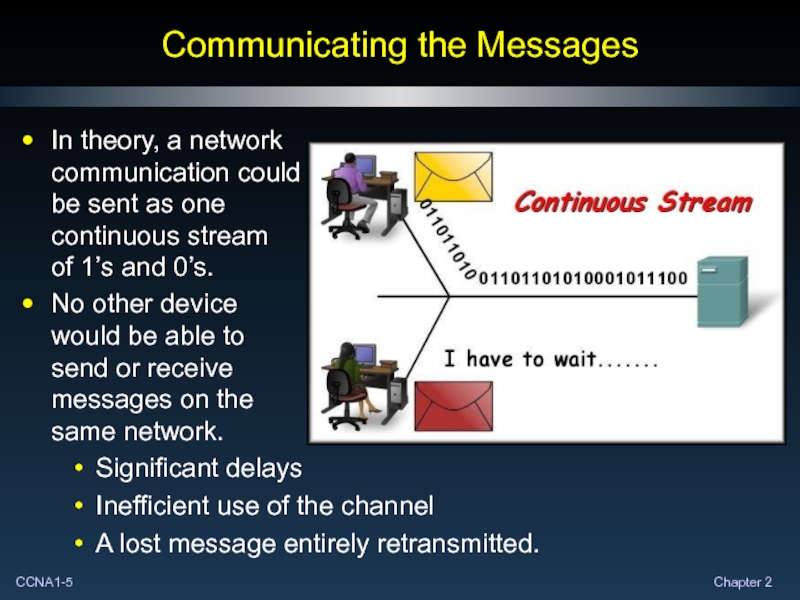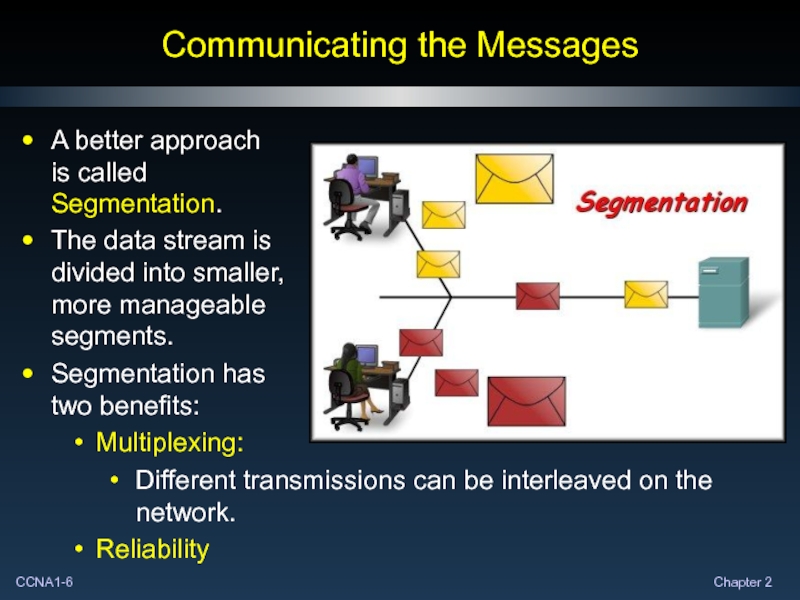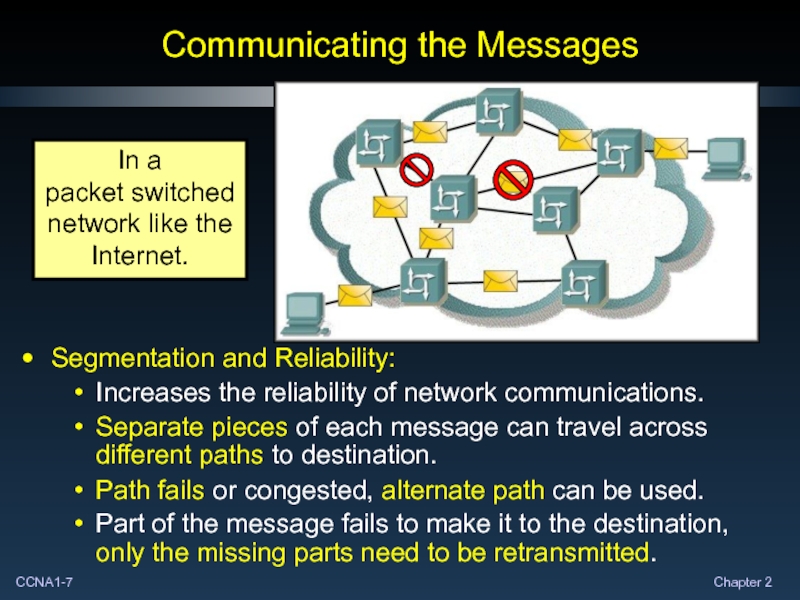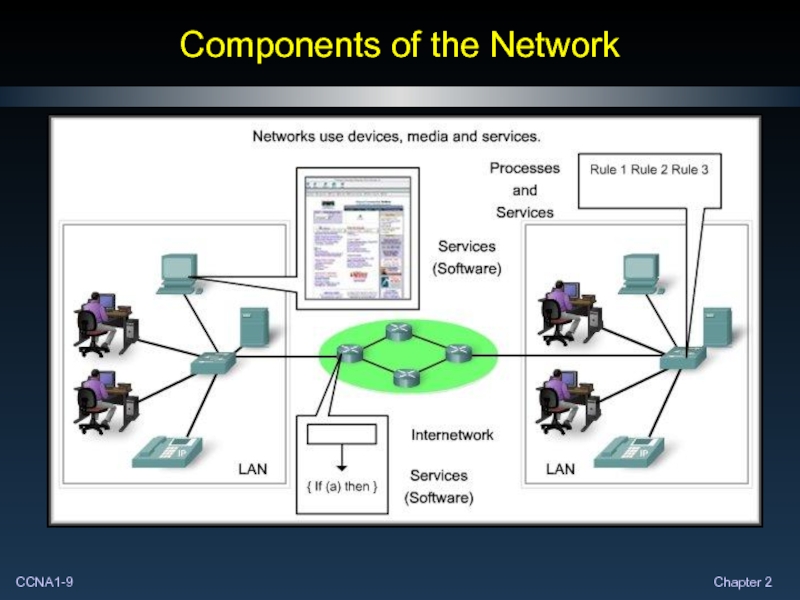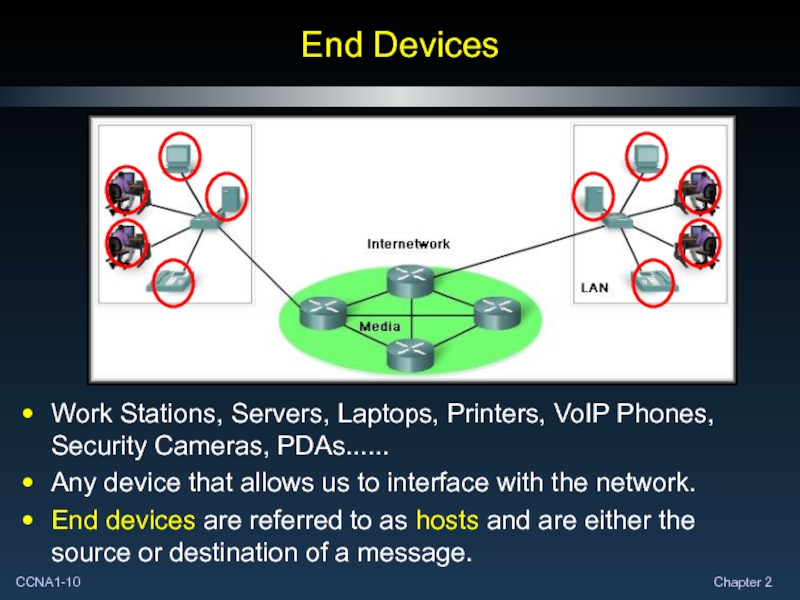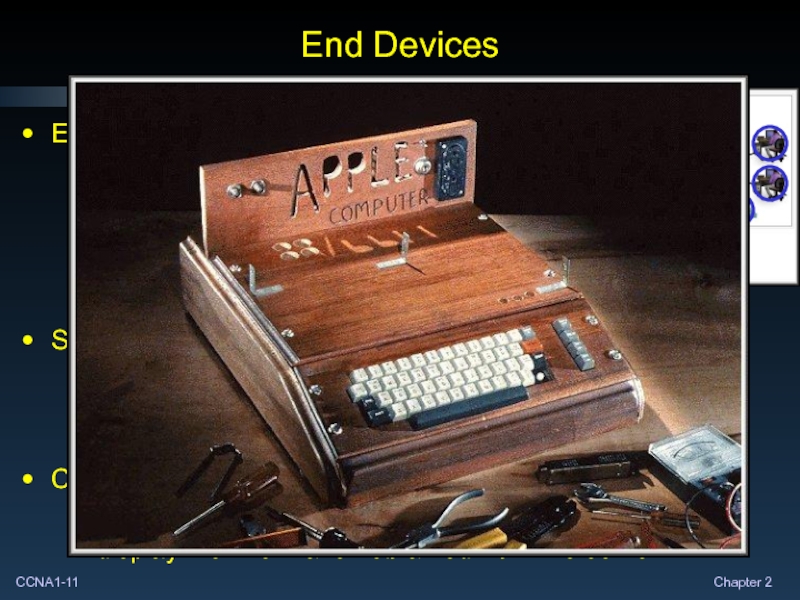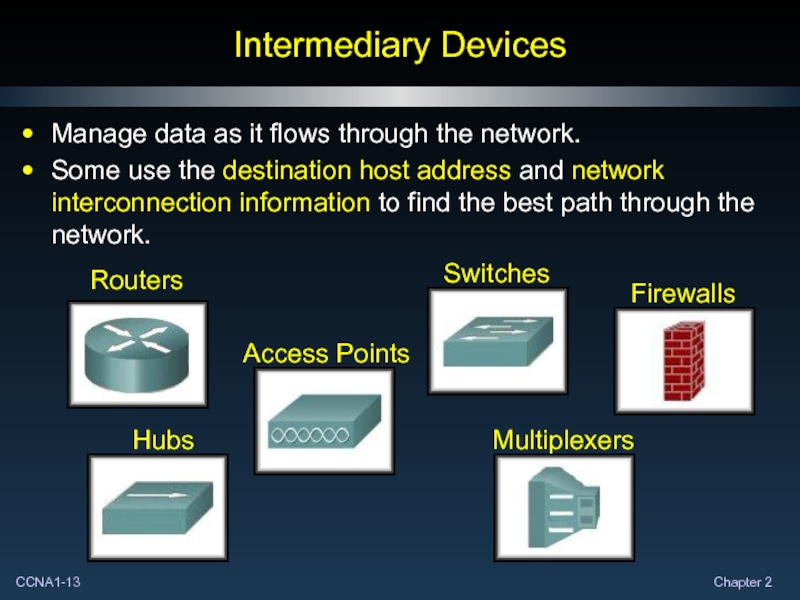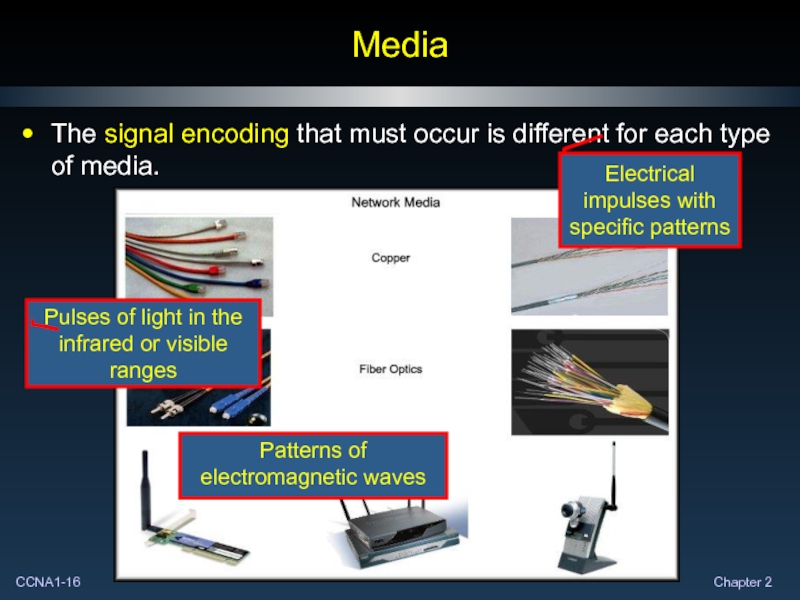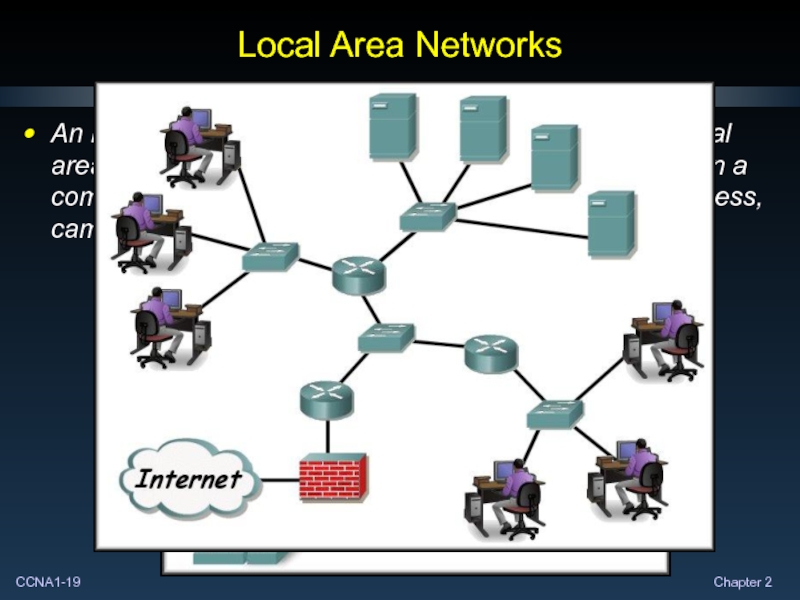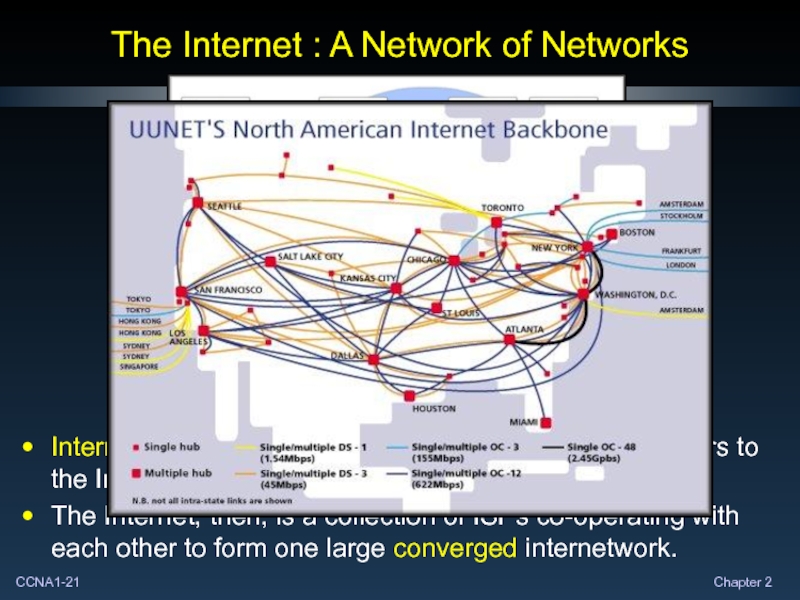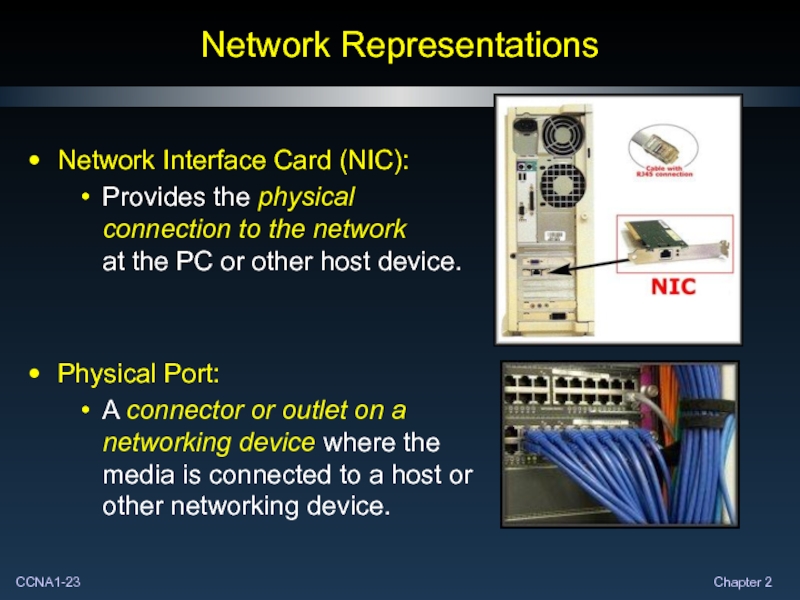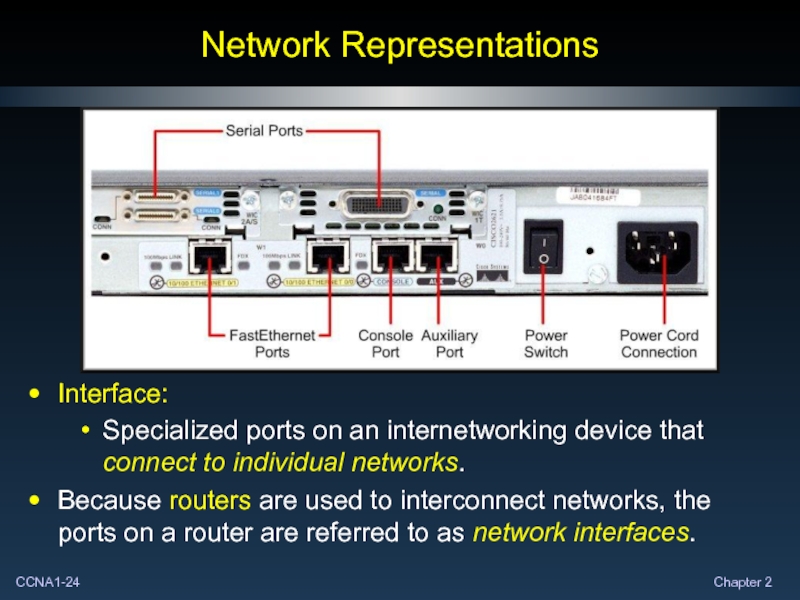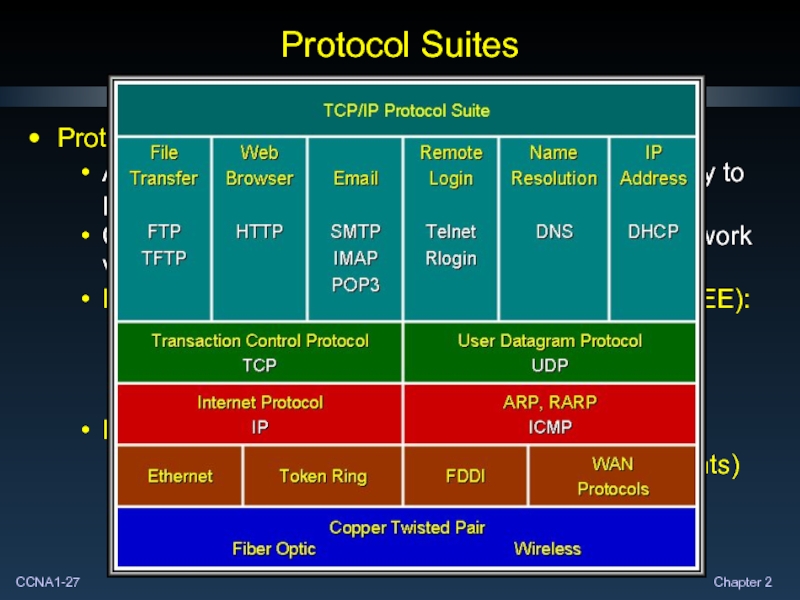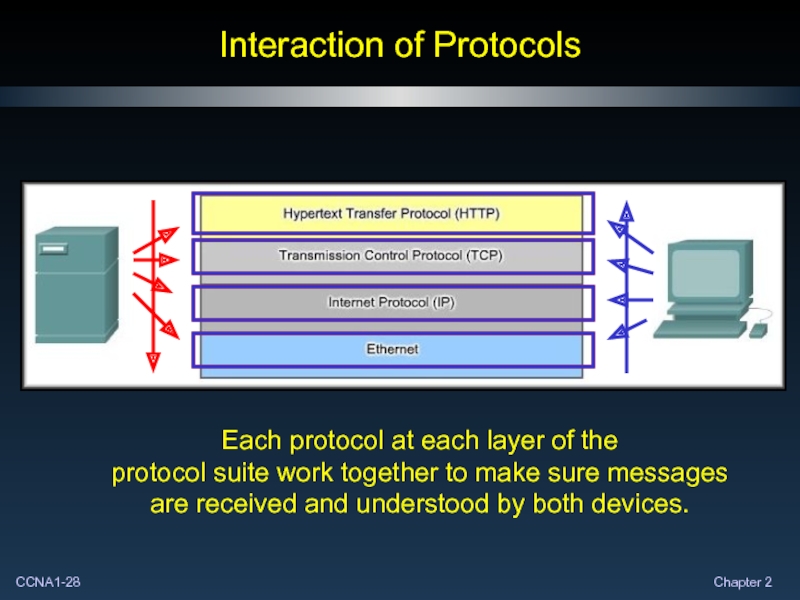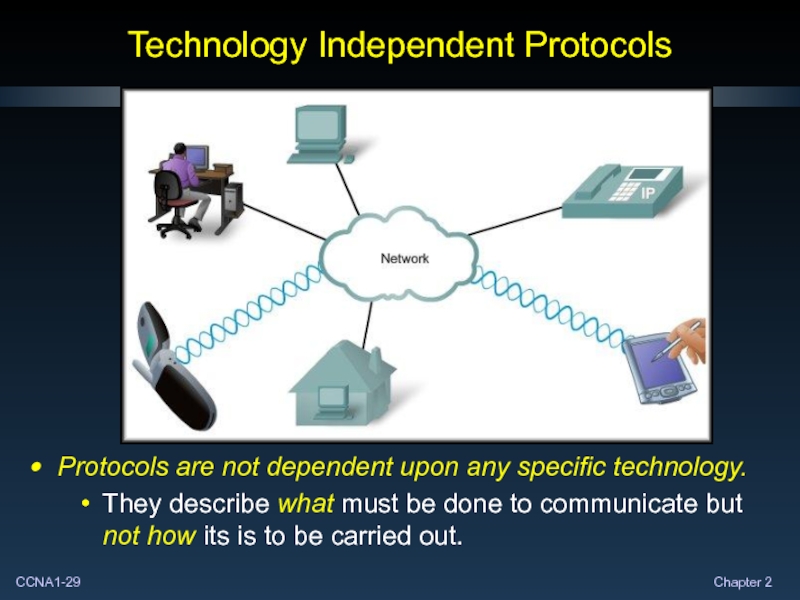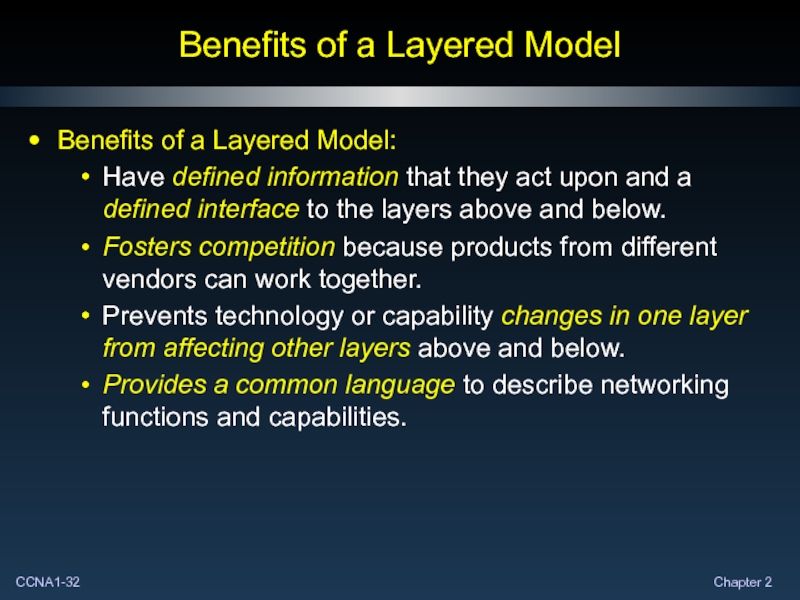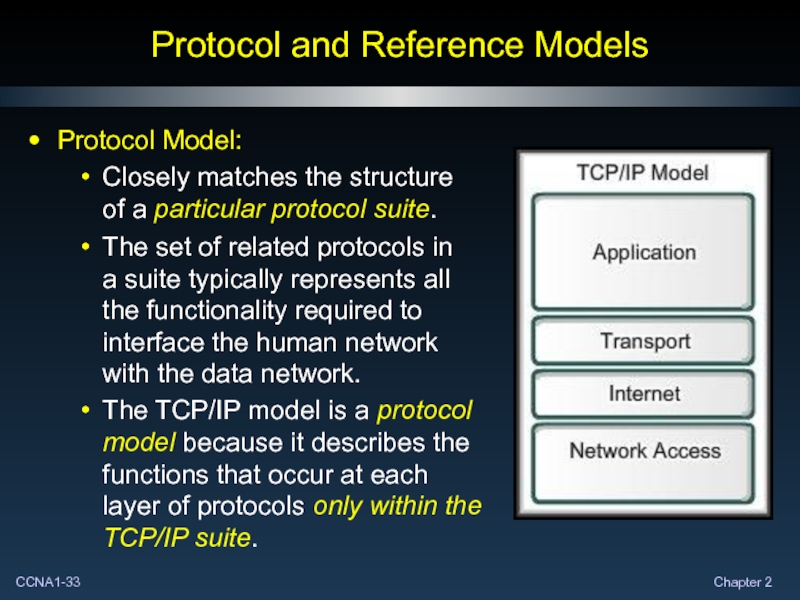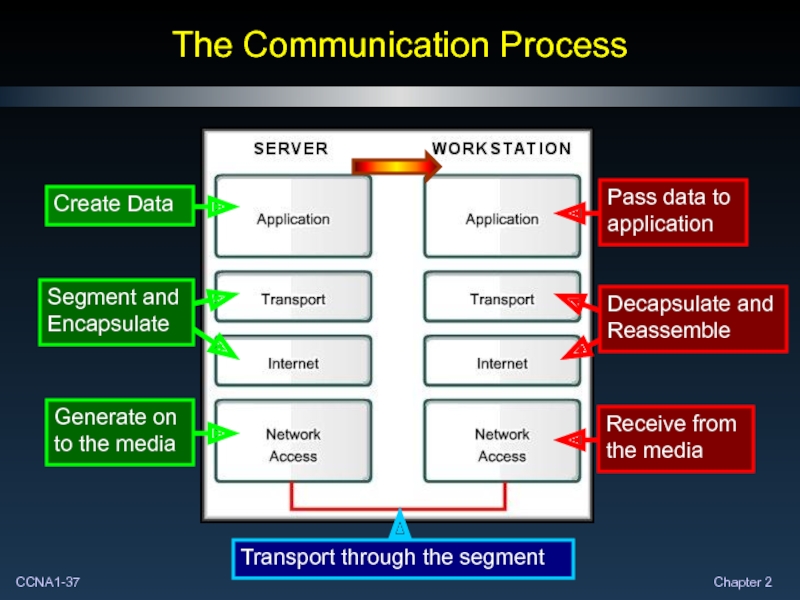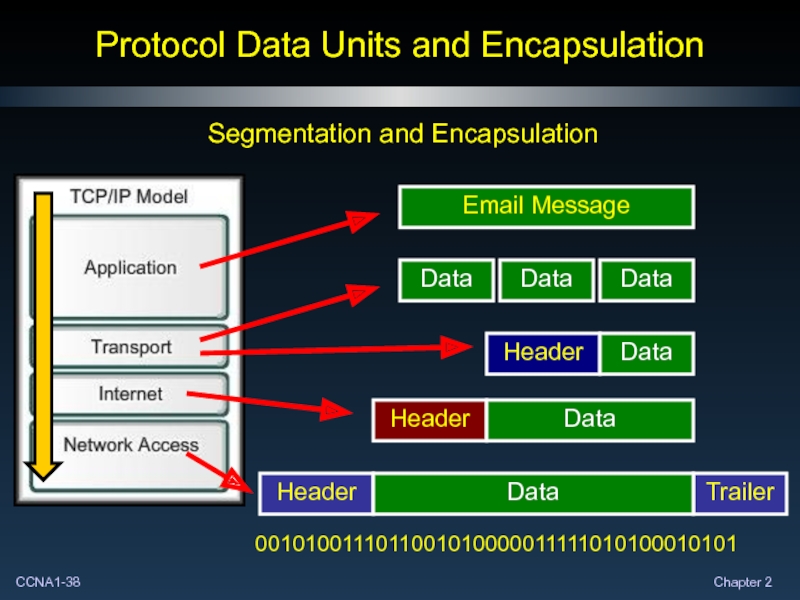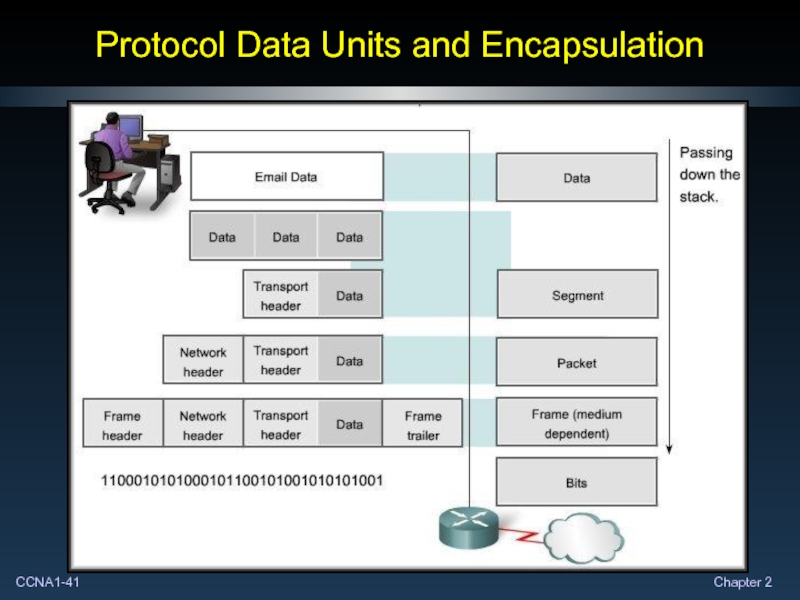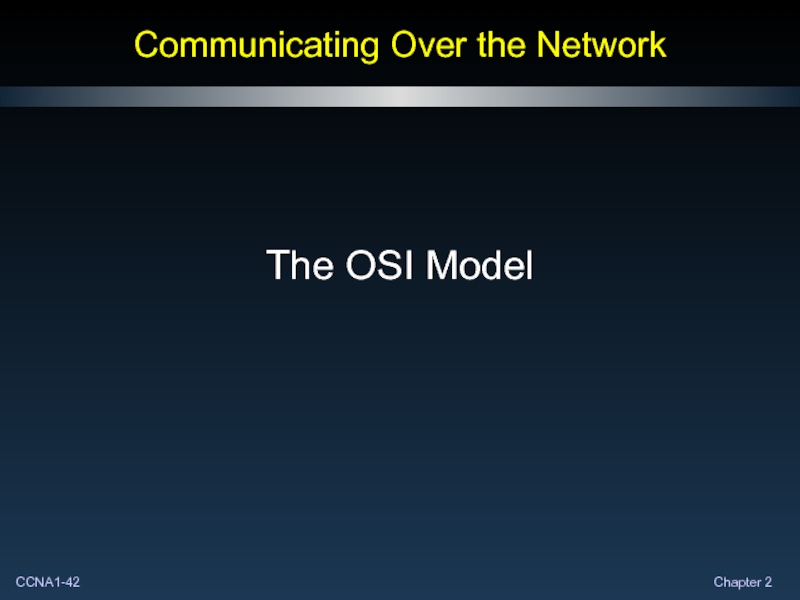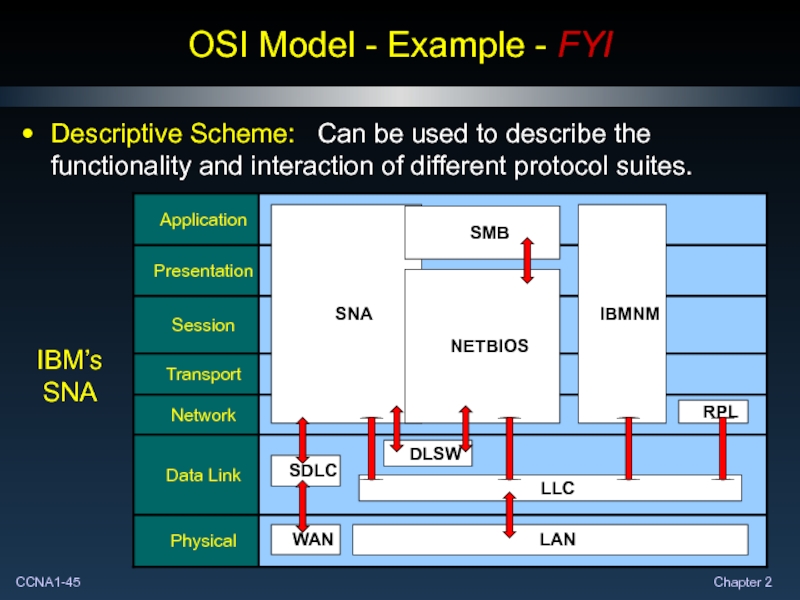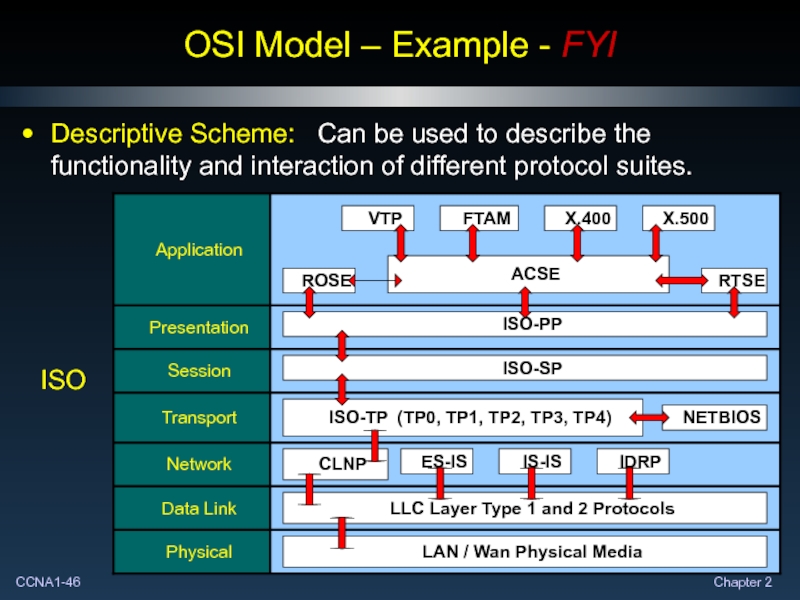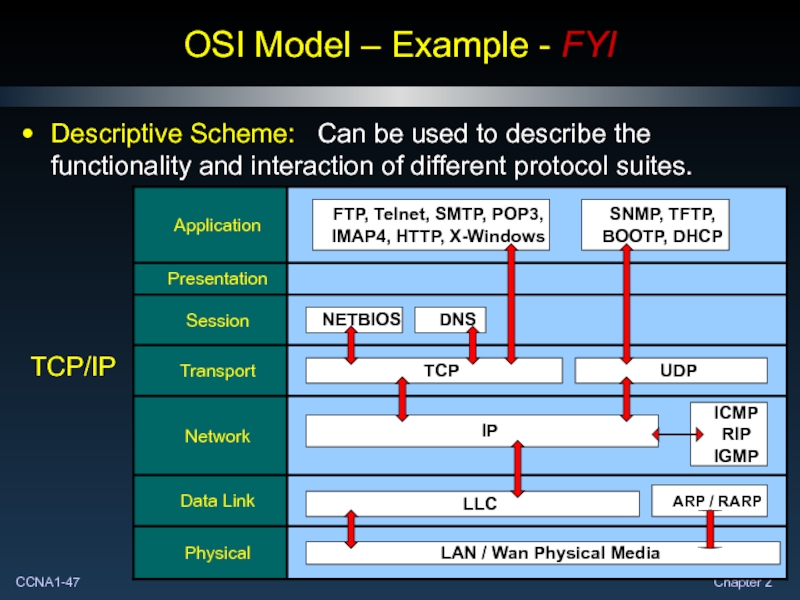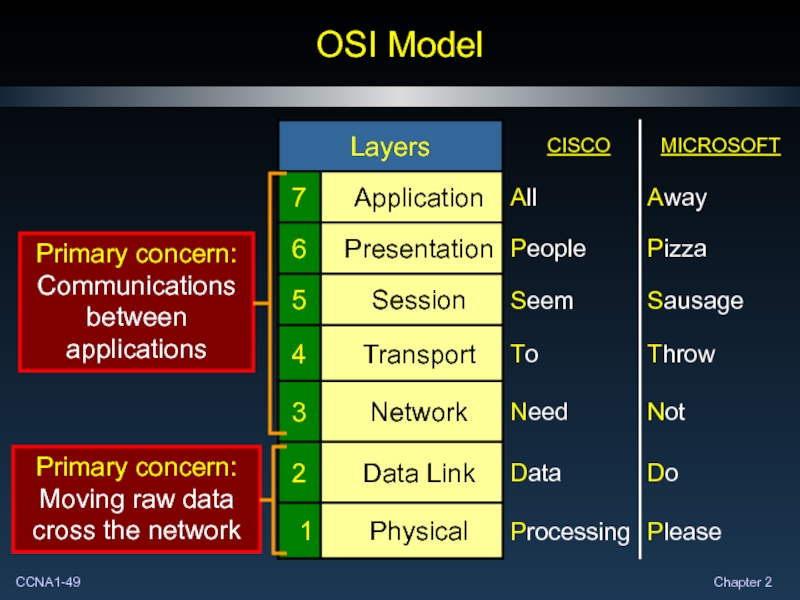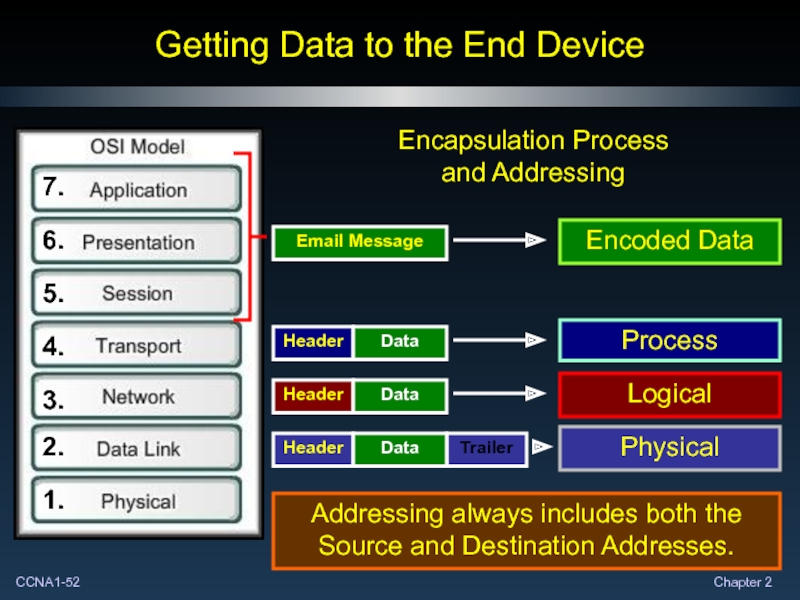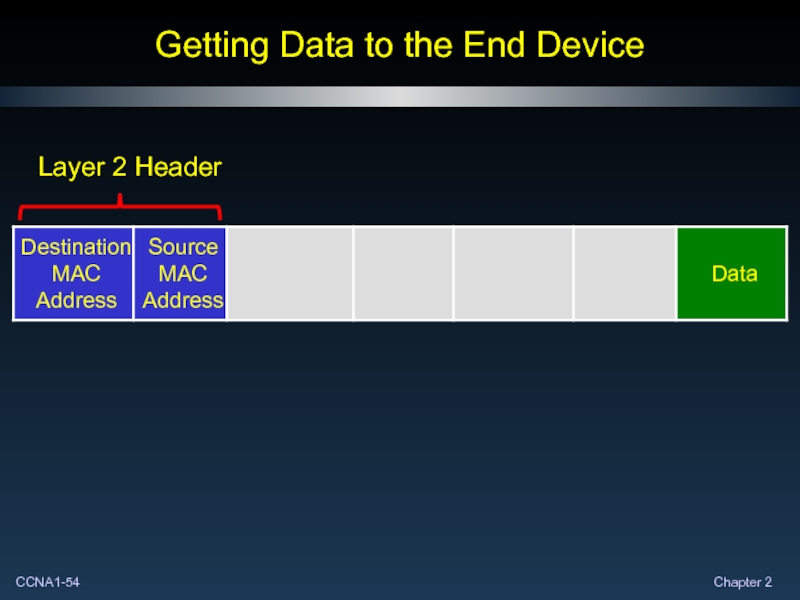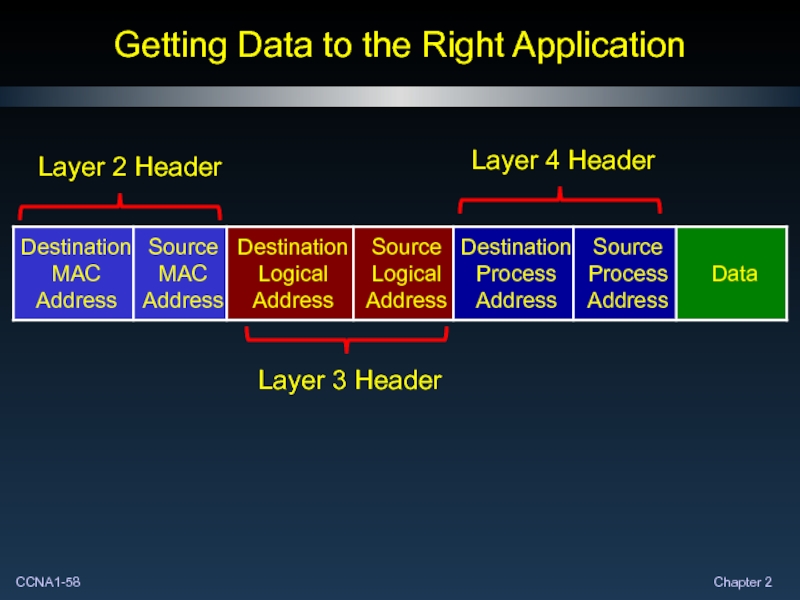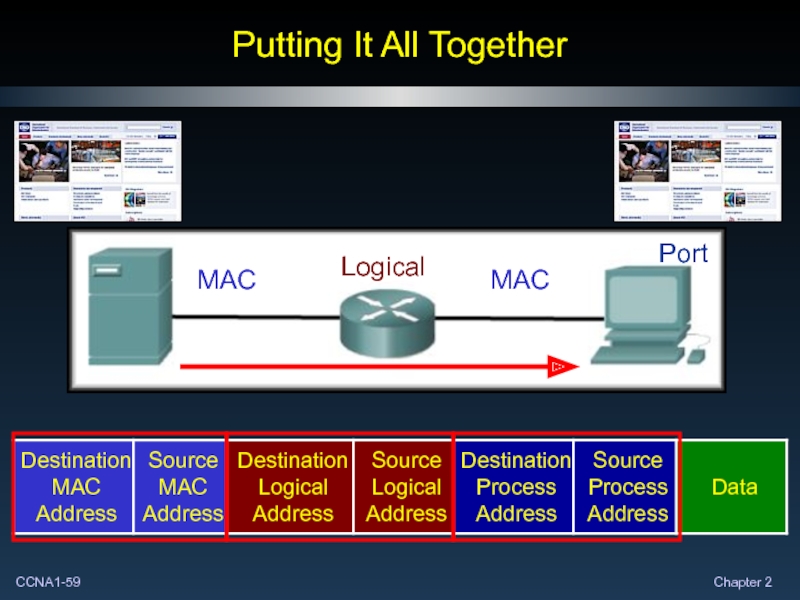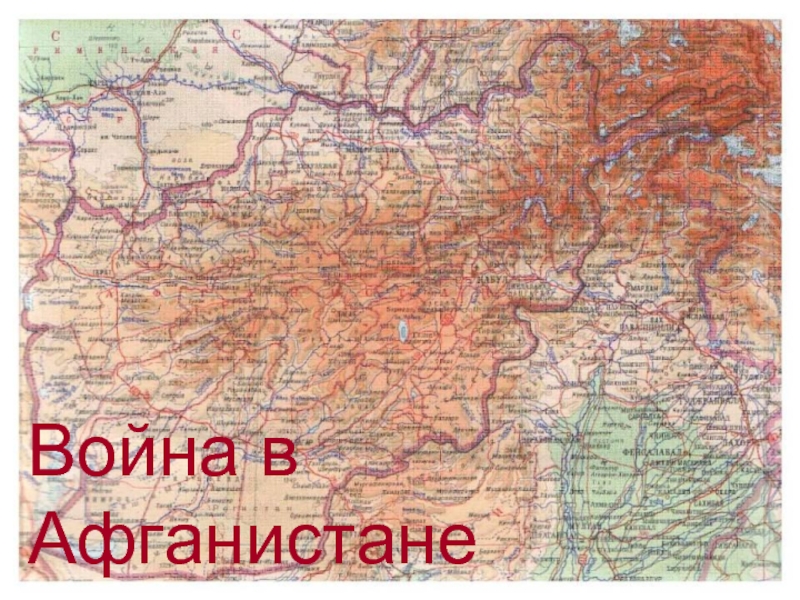- Главная
- Разное
- Дизайн
- Бизнес и предпринимательство
- Аналитика
- Образование
- Развлечения
- Красота и здоровье
- Финансы
- Государство
- Путешествия
- Спорт
- Недвижимость
- Армия
- Графика
- Культурология
- Еда и кулинария
- Лингвистика
- Английский язык
- Астрономия
- Алгебра
- Биология
- География
- Детские презентации
- Информатика
- История
- Литература
- Маркетинг
- Математика
- Медицина
- Менеджмент
- Музыка
- МХК
- Немецкий язык
- ОБЖ
- Обществознание
- Окружающий мир
- Педагогика
- Русский язык
- Технология
- Физика
- Философия
- Химия
- Шаблоны, картинки для презентаций
- Экология
- Экономика
- Юриспруденция
Communicating over the network презентация
Содержание
- 1. Communicating over the network
- 2. Communicating Over the Network The Platform for Communications
- 3. Elements of Communication People communicate in many
- 4. Elements of Communication Devices communicate in exactly the same way.
- 5. Communicating the Messages In theory, a network
- 6. Communicating the Messages A better approach is
- 7. Communicating the Messages Segmentation and Reliability: Increases
- 8. Communicating the Messages Segmentation Disadvantage: Added level
- 9. Components of the Network
- 10. End Devices Work Stations, Servers, Laptops, Printers,
- 11. End Devices End Devices: A host can
- 12. Intermediary Devices Routers, Switches, Hubs, Wireless Access
- 13. Intermediary Devices Manage data as it flows
- 14. Intermediary Devices Regenerate and retransmit data signals.
- 15. Media The medium provides the channel over
- 16. Media The signal encoding that must occur
- 17. Media Different network media have different features
- 18. Communicating Over the Network LANs, WANs and Internetworks
- 19. Local Area Networks An individual network usually
- 20. Wide Area Networks Networks that connect LANs
- 21. The Internet : A Network of Networks
- 22. Network Representations Specialized terminology is used to
- 23. Network Representations Network Interface Card (NIC): Provides
- 24. Network Representations Interface: Specialized ports on an
- 25. Communicating Over the Network Protocols
- 26. Rules That Govern Communications Protocols: Are the
- 27. Protocol Suites Protocol Suite: A group of
- 28. Interaction of Protocols
- 29. Technology Independent Protocols Protocols are not dependent
- 30. Communicating Over the Network Using Layered Models
- 31. Layered Models Layered models separate the functions of specific protocols.
- 32. Benefits of a Layered Model Benefits of
- 33. Protocol and Reference Models Protocol Model: Closely
- 34. Protocol and Reference Models Reference Model: Provides
- 35. TCP/IP Model Open Standard No one
- 36. Request For Comments RFC
- 37. The Communication Process
- 38. Protocol Data Units and Encapsulation Header Header Data Header Trailer 0010100111011001010000011111010100010101 Segmentation and Encapsulation
- 39. Protocol Data Units and Encapsulation Header Header Header Trailer Decapsulation and Reassembly Data 0010100111011001010000011111010100010101
- 40. Protocol Data Units and Encapsulation Header Header
- 41. Protocol Data Units and Encapsulation
- 42. Communicating Over the Network The OSI Model
- 43. OSI Model The International Organization for Standardization
- 44. OSI Model Breaks network communication into smaller,
- 45. OSI Model - Example - FYI Descriptive
- 46. OSI Model – Example - FYI Descriptive
- 47. OSI Model – Example - FYI Descriptive
- 48. OSI Model
- 49. OSI Model Primary concern: Communications between applications
- 50. Communicating Over the Network Network Addressing
- 51. OSI Model
- 52. Getting Data to the End Device Header
- 53. Getting Data to the End Device 1.
- 54. Getting Data to the End Device Layer 2 Header
- 55. Getting Data Through The Network 1. 2.
- 56. Getting Data Through the Network Layer 2 Header Layer 3 Header
- 57. Getting Data to the Right Application 1.
- 58. Getting Data to the Right Application
- 59. Putting It All Together Logical MAC Port MAC
- 60. Comparing the OSI and TCP/IP Models
- 61. Brain a little fuzzy? You need to
Слайд 3Elements of Communication
People communicate in many different ways.
Vocal, a look, a
All of the methods have three things in common.
There is source for the message or a sender.
There is a destination for the message or a receiver.
There is a channel that consists of the media that provides the pathway for the message.
Слайд 5Communicating the Messages
In theory, a network
communication could
be sent as one
continuous stream
of
No other device would be able to send or receive messages on the same network.
Significant delays
Inefficient use of the channel
A lost message entirely retransmitted.
Слайд 6Communicating the Messages
A better approach
is called
Segmentation.
The data stream is
divided into smaller,
more
Segmentation has two benefits:
Multiplexing:
Different transmissions can be interleaved on the network.
Reliability
Слайд 7Communicating the Messages
Segmentation and Reliability:
Increases the reliability of network communications.
Separate
Path fails or congested, alternate path can be used.
Part of the message fails to make it to the destination, only the missing parts need to be retransmitted.
In a
packet switched network like the Internet.
Слайд 8Communicating the Messages
Segmentation Disadvantage: Added level of complexity.
The label is a
Handled by protocols that format and address the message.
Слайд 10End Devices
Work Stations, Servers, Laptops, Printers, VoIP Phones, Security Cameras, PDAs......
Any
End devices are referred to as hosts and are either the source or destination of a message.
Слайд 11End Devices
End Devices:
A host can be a
client, a server or
both.
The software
installed
Servers:
Software that enables them to provide information and services (E-mail, Web Pages) to other hosts on the network.
Client:
Software installed that enables them to request and display the information obtained from the server.
Servers
Clients
Слайд 12Intermediary Devices
Routers, Switches, Hubs, Wireless Access Points, Communication Servers, Security Devices.
Any
Слайд 13Intermediary Devices
Manage data as it flows through the network.
Some use the
Слайд 14Intermediary Devices
Regenerate and retransmit data signals.
Maintain information about what pathways exist
Notify other devices of errors and communication failures.
Direct data along alternate pathways when there is a link failure.
Classify and direct messages according to QoS priorities.
Permit or deny the flow of data, based on security settings.
Слайд 15Media
The medium provides the channel over which the messages travel from
Metallic wires within cables
Glass or plastic fibers
Wireless Transmission
Слайд 16Media
The signal encoding that must occur is different for each type
Electrical impulses with specific patterns
Pulses of light in the infrared or visible ranges
Patterns of electromagnetic waves
Слайд 17Media
Different network media have different features and benefits.
Not all network media
You must make the appropriate choice to provide the proper channel.
Distance it can carry the signal
Environment
Bandwidth
Cost of the media
Installation costs
Cost of connectors and devices
Слайд 19Local Area Networks
An individual network usually spans a single geographical area,
Слайд 20Wide Area Networks
Networks that connect LANs in geographically separated locations. Usually
A TSP traditionally transports voice and data on different networks. Now, providers are offering converged network services.
HDLC, PPP, T1, DS3, OC3, ISDN, Frame Relay
Слайд 21The Internet : A Network of Networks
Internet Service Providers (ISPs) connect
The Internet, then, is a collection of ISPs co-operating with each other to form one large converged internetwork.
Слайд 22Network Representations
Specialized terminology is used to describe how these devices and
Слайд 23Network Representations
Network Interface Card (NIC):
Provides the physical
connection to the network
at the
Physical Port:
A connector or outlet on a networking device where the media is connected to a host or other networking device.
Слайд 24Network Representations
Interface:
Specialized ports on an internetworking device that connect to individual
Because routers are used to interconnect networks, the ports on a router are referred to as network interfaces.
Слайд 26Rules That Govern Communications
Protocols:
Are the rules that govern communications.
The format or
How and when error and system messages are passed between devices.
The setup and termination of data transfer sessions.
The method by which networking devices share information about pathways with other networks.
Слайд 27Protocol Suites
Protocol Suite:
A group of inter-related protocols that are necessary to
Cannot function without a set of standards that network vendors can follow.
Institute of Electrical and Electronics Engineers (IEEE):
Develops standards in telecommunications, information technology and power generation.
Examples: 802.3 (Ethernet), 802.11 (WLAN)
Internet Engineering Task Force (IETF)
Internet standards, RFCs (Request for Comments)
Example: TCP, IP, HTTP, FTP
Слайд 29Technology Independent Protocols
Protocols are not dependent upon any specific technology.
They describe
Слайд 32Benefits of a Layered Model
Benefits of a Layered Model:
Have defined information
Fosters competition because products from different vendors can work together.
Prevents technology or capability changes in one layer from affecting other layers above and below.
Provides a common language to describe networking functions and capabilities.
Слайд 33Protocol and Reference Models
Protocol Model:
Closely matches the structure
of a particular protocol
The set of related protocols in a suite typically represents all the functionality required to interface the human network with the data network.
The TCP/IP model is a protocol model because it describes the functions that occur at each layer of protocols only within the TCP/IP suite.
Слайд 34Protocol and Reference Models
Reference Model:
Provides a common reference
for maintaining consistency within
all
Not intended to be an implementation specification.
Primary purpose is to aid in clearer understanding of the functions and process involved.
Слайд 35TCP/IP Model
Open Standard
No one
company
controls it.
Governed by
IETF Working
Groups
Standards proposed
using Request for Comments
Слайд 38Protocol Data Units and Encapsulation
Header
Header
Data
Header
Trailer
0010100111011001010000011111010100010101
Segmentation and Encapsulation
Слайд 39Protocol Data Units and Encapsulation
Header
Header
Header
Trailer
Decapsulation and Reassembly
Data
0010100111011001010000011111010100010101
Слайд 40Protocol Data Units and Encapsulation
Header
Header
Header
Trailer
Email Message
Data
Data
Data
Protocol Data Units
Data
Segment
Packet
Frame
Слайд 43OSI Model
The International Organization for Standardization (ISO) released the Open Systems
www.iso.org for more information
Слайд 44OSI Model
Breaks network communication into
smaller, more manageable parts.
Makes learning it
Prevents changes in one layer from affecting other layers.
Standardizes network components to allow multiple vendor development and support.
Allows different types of network hardware and software to communicate with each other.
It is a descriptive scheme.
Слайд 45OSI Model - Example - FYI
Descriptive Scheme: Can be used
IBM’s SNA
Слайд 46OSI Model – Example - FYI
Descriptive Scheme: Can be used
ISO
Слайд 47OSI Model – Example - FYI
Descriptive Scheme: Can be used
TCP/IP
Слайд 49OSI Model
Primary concern: Communications between applications
Primary concern: Moving raw data cross
Слайд 52Getting Data to the End Device
Header
Header
Header
Trailer
Email Message
Data
Data
Data
Encoded Data
Process
Logical
Physical
Encapsulation Process and Addressing
1.
2.
3.
4.
5.
6.
7.
Addressing
Слайд 53Getting Data to the End Device
1.
2.
3.
4.
5.
6.
7.
Layer 2 Addressing
Delivery on a single
Unique on the network and represents the device.
Codes placed on the NIC by the manufacturer.
Referred to as the physical address or the MAC address.
Header
Trailer
Data
Source and Destination Physical or MAC Address
Слайд 55Getting Data Through The Network
1.
2.
3.
4.
5.
6.
7.
Layer 3 Addressing
Move data from one local
Addresses must identify both the network and the host on that network.
Used by routers to determine the best path to the destination host.
Слайд 57Getting Data to the Right Application
1.
2.
3.
4.
5.
6.
7.
Layer 4 Addressing
Identifies the specific process
Multiple, simultaneous applications.
Слайд 61Brain a little fuzzy?
You need to learn to
crawl before you can
We are starting with the theory and concepts and will move on to the actual design and implementation of networks.




